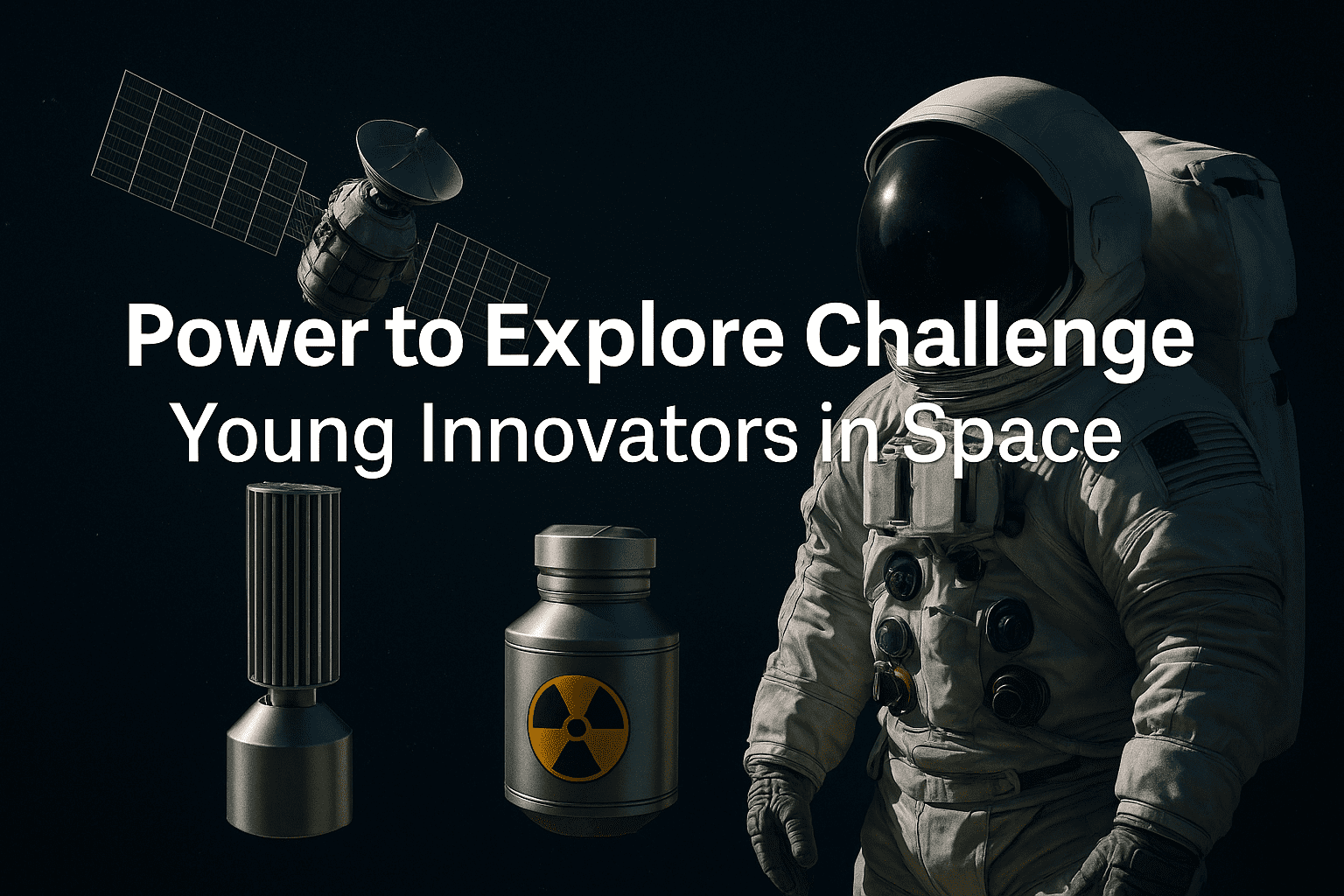NASA’s Power to Explore Challenge: Meet the Young Innovators Reimagining Space Power

What if the next big idea in space exploration came from a high school student?
That’s the driving force behind NASA’s Power to Explore Challenge, a nationwide STEM competition encouraging students to design innovative uses for nuclear-powered space tech. With over 1,400 entries, the 2025 challenge has now narrowed down to 45 brilliant semifinalists—young minds who could one day shape humanity’s future in space.
In this article, we’ll explore:
-
What the Power to Explore Challenge is all about
-
The technology inspiring these ideas—Radioisotope Power Systems (RPS)
-
Highlights from some of the most creative semifinalist submissions
-
How NASA is inspiring the next generation of space pioneers
Let’s dive into how young students are already solving space’s toughest power problems—and what it means for the future of exploration.
🚀 What Is NASA’s Power to Explore Challenge?
Launched by NASA’s Radioisotope Power Systems Program, the Power to Explore Challenge is an annual nationwide contest for K-12 students. It invites participants to imagine bold ways that nuclear power could enable space missions to thrive in extreme environments—like the icy moons of Jupiter or the permanently shadowed craters of the Moon.
1: Encourages early STEM interest
2: Promotes awareness of sustainable space technology
3: Fosters creativity and real-world problem-solving
The 2025 challenge was themed around the idea of exploring places in space that are too dark or distant for solar power. That’s where RPS comes in—compact, nuclear-based power systems that can last decades and work in environments where sunlight is weak or absent.
🌌 What Are Radioisotope Power Systems (RPS)?
To understand the significance of this challenge, it’s important to grasp what RPS actually does.
Radioisotope Power Systems use the heat generated from the natural decay of plutonium-238 to produce electricity. They’ve been powering NASA missions since the 1960s—from the Voyager probes still sending back data after 45 years, to the Curiosity and Perseverance rovers exploring Mars today.
These systems:
-
Don’t rely on sunlight
-
Work for decades without refueling
-
Operate reliably in harsh, cold, and distant environments
📚 Learn more about RPS on NASA’s official site.
🧠 Who Made the 2025 Semifinalist List?
From 1,400+ entries across 48 states, the semifinalist pool was narrowed to 45 standout students from grades K–12. Each demonstrated unique ideas rooted in creativity and scientific understanding.
Some standout project ideas include:
-
Lunar Greenhouses powered by RPS to grow crops on the Moon
-
Robotic Swimmers exploring the subsurface oceans of Europa
-
Radiation-shielded Habitats energized by nuclear power for long-duration Mars missions
-
Temperature-regulated Research Drones for Saturn’s moon Titan
These students didn’t just imagine space exploration—they designed practical solutions for its challenges.
📌 The complete list of semifinalists can be found on NASA’s Power to Explore page.
🏆 What Happens Next for the Semifinalists?
The 45 semifinalists will now:
-
Receive a NASA RPS-themed prize pack
-
Advance to the final judging round, where judges assess scientific accuracy, creativity, and clarity
-
Be considered for national recognition and the opportunity to engage with NASA scientists
Winners will be announced in May 2025, and their work will be showcased to inspire other young space enthusiasts nationwide.
🌍 Why Competitions Like This Matter
NASA’s Power to Explore Challenge isn’t just about selecting winners—it’s about sparking early interest in space and nuclear technology. As space exploration ventures further into unknown territory, future missions will need thinkers, engineers, and dreamers who can tackle problems we haven’t even imagined yet.
Benefits of the Challenge:
✓ Encourages students to pursue STEM fields
✓ Teaches real-world scientific thinking
✓ Promotes innovation at a young age
According to NASA RPS program manager April Smith, “This generation is the one that could power the next leap in space. Competitions like this give them a running start.”
🔗 Trusted Resources
To explore further about RPS technology and student STEM opportunities:
❓FAQs About the Power to Explore Challenge
Q: What is the main goal of the Power to Explore Challenge?
A: It encourages K–12 students to imagine creative uses of nuclear power in space missions, promoting STEM education.
Q: Who can participate in this challenge?
A: Students from kindergarten through 12th grade in the United States, including territories and U.S.-affiliated schools abroad.
Q: What are the judging criteria?
A: Submissions are judged based on creativity, scientific accuracy, relevance to RPS, and quality of communication.
Q: Are there prizes?
A: Yes! Finalists receive NASA-themed STEM kits and may be invited to interact with NASA experts.
Q: How can teachers and parents get involved?
A: NASA provides lesson plans, resources, and promotional materials for educators and families to support student participation.
🚀 Your Turn: Inspire the Next Generation of Explorers
What if your child, sibling, or student is the next big innovator in space exploration?
The Power to Explore Challenge proves that curiosity and creativity can lead to world-changing ideas—even in elementary school. Share this article with a young space enthusiast, and encourage them to power up their imagination.
Which idea from the semifinalists did you find the most exciting? Let us know in the comments!
Read our previous article: Upcoming Marvel Phase 6 Movies & TV Shows
Read our previous article: Upcoming Marvel Phase 6 Movies & TV Shows